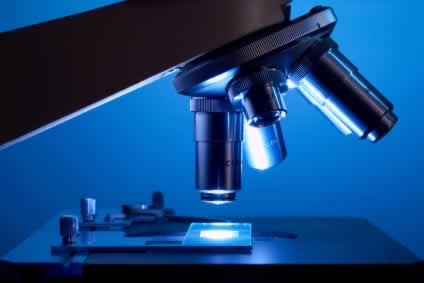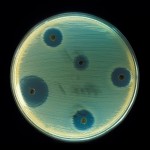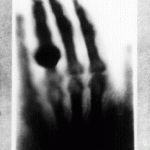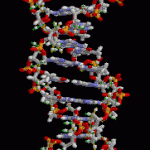 Science has brought us many exciting discoveries. Laboratories are great places to make discoveries, since they are generally sterile and equipped with what is needed to perform experiments. Sometimes, lab experiments yield the results expected, and at other times, lab discoveries have been made by accident. But no matter how they are made, some lab discoveries have become a regular part of life. Here are 10 famous lab discoveries that history remembers — and you will probably recognize:
Science has brought us many exciting discoveries. Laboratories are great places to make discoveries, since they are generally sterile and equipped with what is needed to perform experiments. Sometimes, lab experiments yield the results expected, and at other times, lab discoveries have been made by accident. But no matter how they are made, some lab discoveries have become a regular part of life. Here are 10 famous lab discoveries that history remembers — and you will probably recognize:
 Penicillin: This is one of the most common treatments for bacterial infections. A whole range of antibiotics was developed as a result of the discovery for penicillin. In 1928, when Alexander Fleming, a Scot, was researching the flu, he found that a mold had grown in one of his petri dishes. He happened to be growing a staphylococcus bacteria in that dish, and he saw that the mold was attacking and killing the bacteria. He realized that certain organisms could be killed by the mold, and the blue-green fuzzy discovery led to the development of penicillin.
Penicillin: This is one of the most common treatments for bacterial infections. A whole range of antibiotics was developed as a result of the discovery for penicillin. In 1928, when Alexander Fleming, a Scot, was researching the flu, he found that a mold had grown in one of his petri dishes. He happened to be growing a staphylococcus bacteria in that dish, and he saw that the mold was attacking and killing the bacteria. He realized that certain organisms could be killed by the mold, and the blue-green fuzzy discovery led to the development of penicillin. X-Rays: We see x-rays used all the time to assess what is going on inside the body. From looking at bone fractures to looking at dental work, x-rays offer an inside look, especially of bone material. Many scientists in the 19th century were working in labs to discover the penetration of rays emitted by electrons when they strike a metal target. In 1895, though, Wilhelm Röntgen was playing around with the idea and put different objects in front of the resultant radiation. He looked over and saw an image of his bones on the wall. The first “medical” x-ray was taken by Röntgen — of his wife’s hand. Later, the difference between x-rays and gamma rays became known, and x-rays have been used in a number of discoveries in the lab, as well as for searching the cosmos for information on the origin of the universe.
X-Rays: We see x-rays used all the time to assess what is going on inside the body. From looking at bone fractures to looking at dental work, x-rays offer an inside look, especially of bone material. Many scientists in the 19th century were working in labs to discover the penetration of rays emitted by electrons when they strike a metal target. In 1895, though, Wilhelm Röntgen was playing around with the idea and put different objects in front of the resultant radiation. He looked over and saw an image of his bones on the wall. The first “medical” x-ray was taken by Röntgen — of his wife’s hand. Later, the difference between x-rays and gamma rays became known, and x-rays have been used in a number of discoveries in the lab, as well as for searching the cosmos for information on the origin of the universe. DNA: Every junior high school student knows that DNA is an essential part of our genetic make up. And most people are familiar with its characteristic double helix design. While DNA was first isolated in 1869 by Friedrich Miescher, its structure remained a mystery until 1953. Many people in multiple labs were trying to discover the structural nature of DNA. Who should get the credit for the discovery of the double helix structure is a bit murky. While James Watson and Francis Crick, along with Maurice Wilkins received a Nobel Prize for the discovery, many are still in favor of Rosalind Franklin as being the discoverer (she was dead at the time of the awarding of the Nobel Prize, and the prize was only presented to living recipients at the time). Supporters of Franklin point to an x-ray picture of DNA she had taken, and that was shown — against her wishes — to others. The debate over who should get credit continues to rage today, and factors such as when papers on the subject were published, as well as who might have stolen information from whom, are taken into account. But, generally, all of those working on DNA at the time are credited now with contributions.
DNA: Every junior high school student knows that DNA is an essential part of our genetic make up. And most people are familiar with its characteristic double helix design. While DNA was first isolated in 1869 by Friedrich Miescher, its structure remained a mystery until 1953. Many people in multiple labs were trying to discover the structural nature of DNA. Who should get the credit for the discovery of the double helix structure is a bit murky. While James Watson and Francis Crick, along with Maurice Wilkins received a Nobel Prize for the discovery, many are still in favor of Rosalind Franklin as being the discoverer (she was dead at the time of the awarding of the Nobel Prize, and the prize was only presented to living recipients at the time). Supporters of Franklin point to an x-ray picture of DNA she had taken, and that was shown — against her wishes — to others. The debate over who should get credit continues to rage today, and factors such as when papers on the subject were published, as well as who might have stolen information from whom, are taken into account. But, generally, all of those working on DNA at the time are credited now with contributions. Microwaves for cooking: There are few appliances that have changed life the way the microwave oven has. Indeed, many people are able to prepare fast, easy meals with the help of the microwave oven. It has become a staple in many kitchens, and there are few homes indeed without a microwave oven. However, the idea of using microwaves for cooking was discovered quite by accident. Magnetrons, which emit microwaves, were used in WWII for radar. They were instrumental in detecting Nazis. After the war, magnetrons were studied in a number of labs, including at Raytheon. One engineer, Percy Spencer, had a candy bar in his pocket. The magnetron in the room melted the candy bar, and scientists realized that this could be an effective way to quickly cook food. Then all they had to do was develop the technology and make it portable and safe for home use.
Microwaves for cooking: There are few appliances that have changed life the way the microwave oven has. Indeed, many people are able to prepare fast, easy meals with the help of the microwave oven. It has become a staple in many kitchens, and there are few homes indeed without a microwave oven. However, the idea of using microwaves for cooking was discovered quite by accident. Magnetrons, which emit microwaves, were used in WWII for radar. They were instrumental in detecting Nazis. After the war, magnetrons were studied in a number of labs, including at Raytheon. One engineer, Percy Spencer, had a candy bar in his pocket. The magnetron in the room melted the candy bar, and scientists realized that this could be an effective way to quickly cook food. Then all they had to do was develop the technology and make it portable and safe for home use. Transistor: There are few discoveries as important in modern history as those leading up to the development of the transistor. If it is electronic, and it has memory, or it needs to transmit, or do just about anything else, it has a transistor. The transistor is the basis for all of the advancements in electronics seen for the last 60 years. The transistor was preceded by a vacuum tube that amplified signals, specifically for telephone lines. However, the vacuum tube was inefficient and overheated quickly. Bell Labs began working on the problem after WWII, and in 1948 unveiled the transistor to very little fanfare. However, those who worked at Bell Labs at the time, and went on to form other companies, took their knowledge with them, and the beginnings of Silicon Valley and the technology revolution were underway.
Transistor: There are few discoveries as important in modern history as those leading up to the development of the transistor. If it is electronic, and it has memory, or it needs to transmit, or do just about anything else, it has a transistor. The transistor is the basis for all of the advancements in electronics seen for the last 60 years. The transistor was preceded by a vacuum tube that amplified signals, specifically for telephone lines. However, the vacuum tube was inefficient and overheated quickly. Bell Labs began working on the problem after WWII, and in 1948 unveiled the transistor to very little fanfare. However, those who worked at Bell Labs at the time, and went on to form other companies, took their knowledge with them, and the beginnings of Silicon Valley and the technology revolution were underway.


